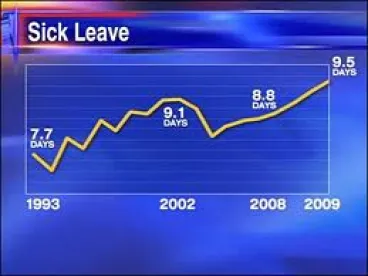The proliferation of paid sick leave (PSL) laws at state and local levels, with differing and sometimes conflicting provisions, presents compliance challenges for multistate employers. Last week’s article presented a number of items often addressed in a PSL statute or ordinance. This week, we offer some general policy considerations to assist employers who are confronted with compliance obligations in multiple jurisdictions.
The basic starting point is to determine whether you can use a “one-size–fits-all” policy and whether it makes sense to do that. The answer will turn on how many locations are involved, how different the requirements are in those jurisdictions, and how important it is to have a single policy. Trying to use a single policy means committing to the most generous (employee-friendly) options in each jurisdiction, including those locations where the law does not require such a level of generosity.
For a national company with a location in Montgomery County, Maryland, for example, this means deciding if you are willing to allow every employee to have up to 80 hours of paid sick leave per year, the permitted cap on use of leave under the Montgomery County law. (The potential leave is even higher for national employers in the hotel industry, as Los Angeles requires such employers to allow 96 paid hours of leave per year.) An employer with only two locations covered by PSL may face that same dilemma if one of the locations is in Montgomery County, Maryland. (The maximum allowed leave per year typically ranges from 24 to 40 hours for most PSL laws.)
In making this decision, ask how much the company values uniformity throughout its organization as compared to the importance of minimizing costs associated with PSL requirements. Typically, there will be one or two jurisdictions (often in California) that have especially generous policies and the company may not want to provide that level of benefit to all employees. A better approach for most multistate employers may be a “one-size-fits-most” policy that allows for variations for particular jurisdictions.
Another common question is whether a current paid time off (PTO) or vacation policy can be used to comply with PSL requirements. While this is generally permissible (and sounds appealing), simply defaulting to PTO may have some unintended consequences – principally limiting the ability to require advance notice. Using a single type of leave will mean the PSL prohibitions of requiring advance notice or supporting documentation will apply to ALL uses of that leave type. (Remember, most PSL laws require the employee be allowed unplanned absences simply based on the employee’s representation of needing time off for a covered purpose.)
In theory, a company could have two types of PTO – once an employee used up the “no notice” PTO, normal notice and other requirements would apply. But labeling both groups as PTO just seems to be asking for trouble and confusion. A more practical option is to have at least two types of leave – whatever the label. For instance, a company may stick with traditional labels of vacation and sick, have the labels of PTO and PSL, or even have three categories of time off – vacation, personal, and PSL. No matter the label, there can be different rules for each leave category.
The proverbial devil is in the details. As discussed last week, key variables in PSL laws to be aware of include the accrual rate for sick leave, maximum allowed leave per year, carryover of leave to the following year, qualifying reasons for leave and notice requirements. When crafting a policy:
-
Determine the employees who will be eligible for PSL, the minimum number of hours necessary to qualify for PSL, and when eligibility kicks in
-
Determine the maximum amount of PSL per year, the accrual rate, carryover policy (use it or lose it or pay out), and whether accrued PSL will be paid out at termination of employment
-
Determine the circumstances that will qualify for PSL, the increments for usage and the notice required
Don’t forget to make any required postings in a conspicuous location (or post electronically, if permitted). Finally, train the necessary personnel to properly and consistently implement the policy in order to avoid or minimize the potential for retaliation claims. Most PSL laws specifically prohibit retaliation for using or requesting PSL.
Given the complexity of paid sick leave laws, employers are encouraged to consult with an employment attorney to ensure leave policies satisfy not only applicable paid sick leave laws (and potentially conflicting provisions), but also other legal obligations.



 />i
/>i

